
How an Ojai Ranch House Went from Ho-Hum to OMG (Hint: It Involves a Fiery Pink Door)
Los Angeles architect Barbara Bestor transforms a “generic” three-bedroom in an oak-studded neighborhood into a cozy-modern dream house for a creative young family.

Laure Joliet
We only recommend things we love. If you buy something through our site, we might earn a commission.
Los Angeles-based architect Barbara Bestor has created some of California’s most playful and inventive buildings. She’s the design force behind the 100,000-square-foot Beats by Dré compound in Culver City, the Snap, Inc headquarters in Santa Monica, and the Ashes & Diamonds winery in Napa. But unlike many of her esteemed peers, Bestor is still as excited to re-imagine a quaint neighborhood coffee shop, or a small-footprint home in an artsy enclave like Bend, OR or Ojai, CA as she is a hipster mega-plex.
So when a Sonos creative executive with a young family approached Bestor about renovating his ranch house in the Arbolada neighborhood of Ojai, known for its tree-studded lots and peaceful winding roads, she jumped in with her signature magic, building a “low-key design-y” house with a bold color story.
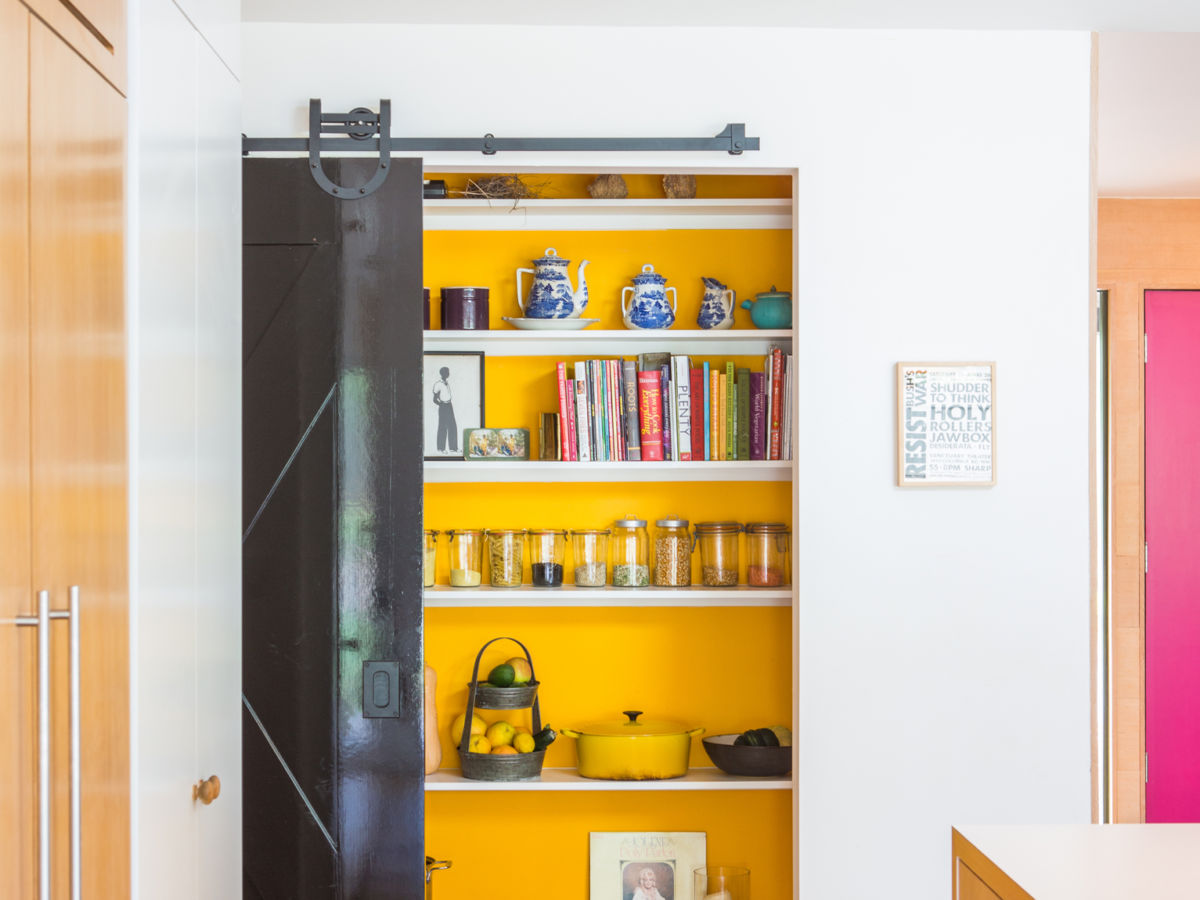
Laure Joliet
“I don’t know what you call this kind of house. It’s kind of a craftsman ranch, maybe? It’s a real California typology that just says ‘regular house,'” she says. Bestor distills her approach to re-habbing less-than-exciting architecture and creating a comfortable family home to a four-part plan. “You open up the inside, add better bathrooms, build a great kitchen, and incorporate some pops of color, and—Bob’s your uncle—you’ve got a great house.”

Laure Joliet
Soft Douglas fir wood paneling, plywood, and graphic tile from Granada are three staples of Bestor Architecture’s residential design work. She calls herself a “reformed modernist,” with a less austere perspective. “I like things to be comfortable, smart, and pretty,” she says. “I can’t really hang with granny wallpaper, but I am always thinking, ‘How do I warm something up?'”

Laure Joliet

“Anything that’s nailed down,” meaning all of the permanent surfaces, “I like to keep natural wood and white paint.” Benjamin Moore Atrium White creates a clean slate for design elements to shine. “Then I like to use really intense colors in small quantities so they’re a moment of delight, like in a pantry, or with a light fixture, or on a door,” says says.

Laure Joliet
“It’s inexpensive to add highlights with paint,” adds Bestor. “I’m not averse to totally immersive crazy stuff with commercial projects, but for residential work it’s just by nature a little more low-key. And when you’re in this amazing natural environment, it’s really about the outdoors.”
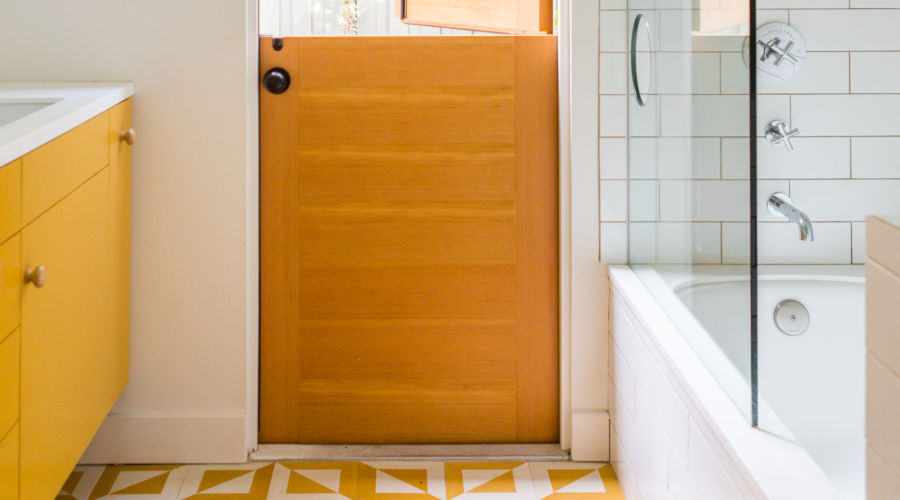
Laure Joliet
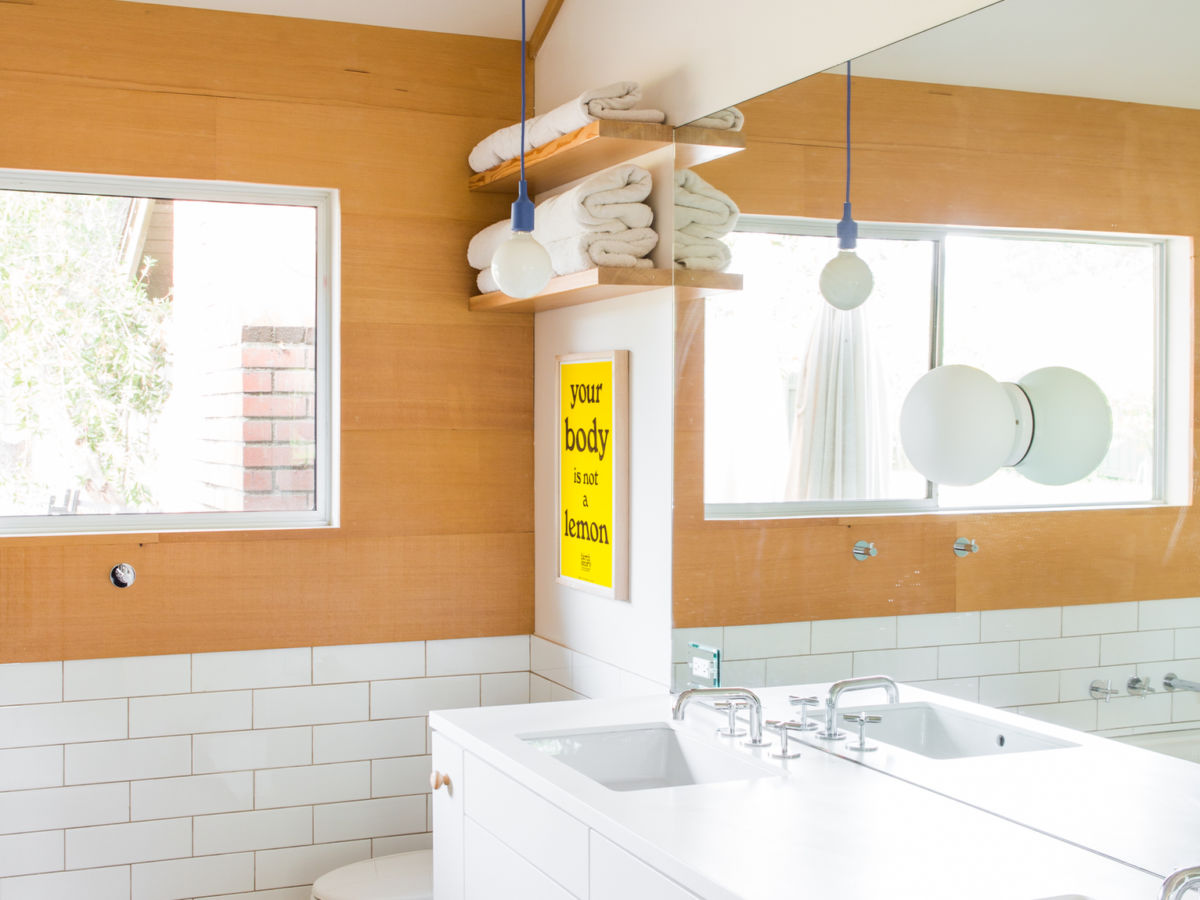
Laure Joliet
A mix of vintage and inherited furniture, nothing too design-forward, balances out the more aggressive design touches—like an electric pink front door and taxi-yellow light fixtures. As long as colors are all around the same intensity, like this pure orange upholstered chair and primary red high chair, they’ll play well together.
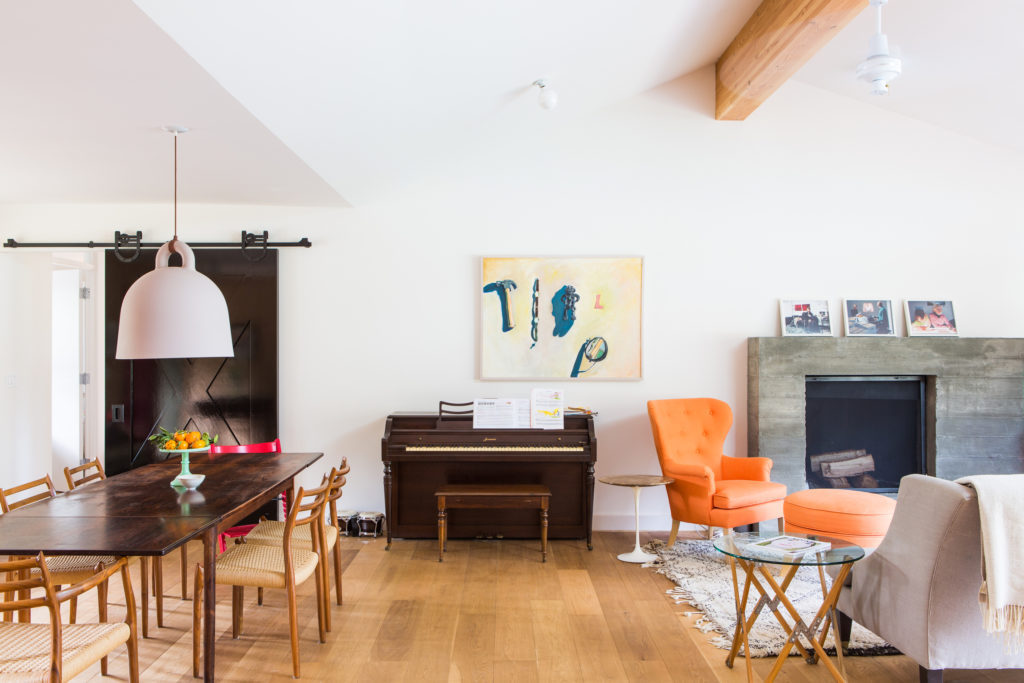
Laure Joliet
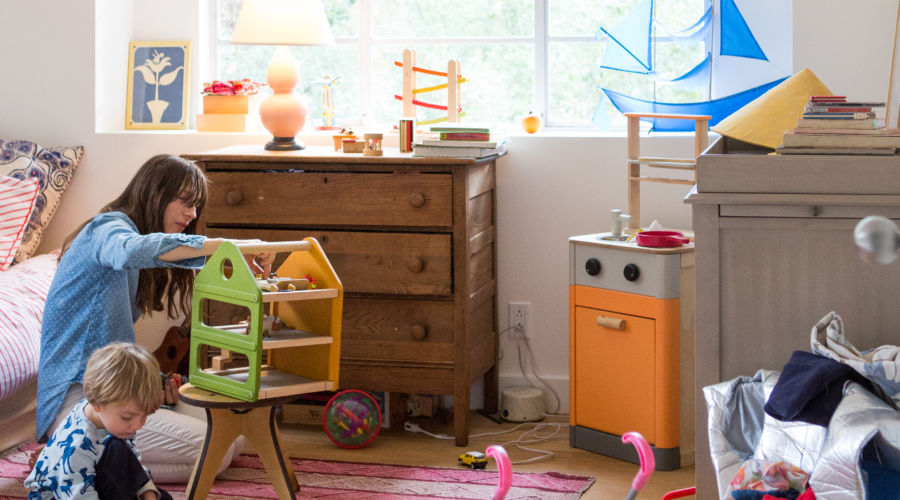
Laure Joliet
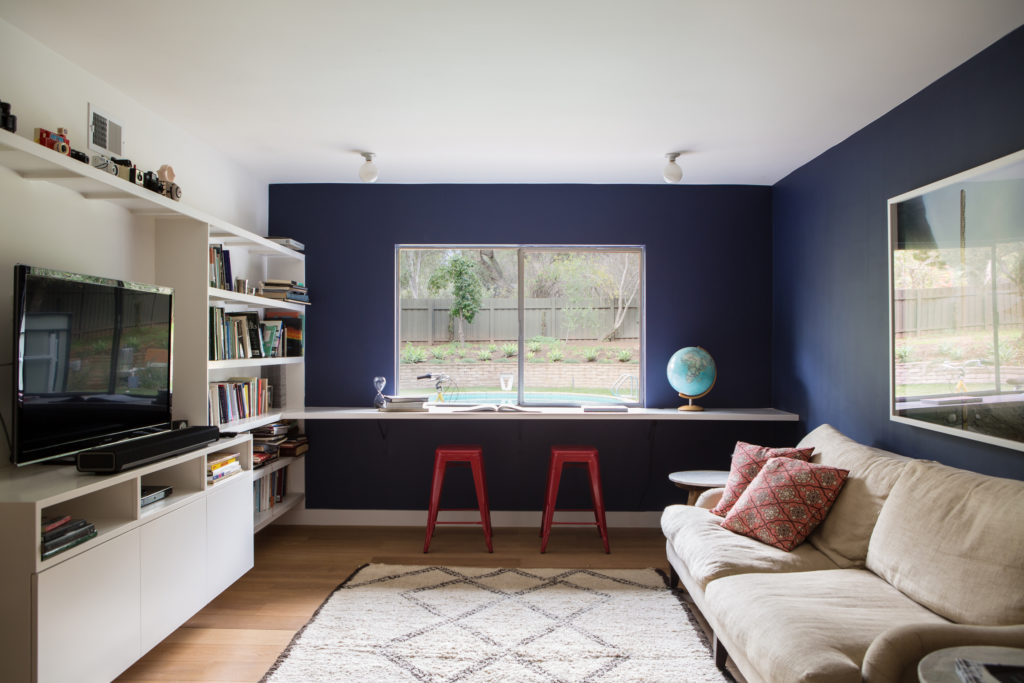
Laure Joliet
Bestor’s approach to the exterior paint scheme was inspired by the surrounding environment, with a twist. “I tend to match the color of a house to the trees around it if an owner will let me,” she says. “You use white paint on a house if you want to call attention to the architecture, like sculpture. But if you don’t, you can use adaptive color, so it blends with its surroundings. We tried to match the exterior paint to the green of the oak leaves. And they were game for that pink door, which is a deep, deep glossy color that will last forever.”

Laure Joliet

Laure Joliet
The existing pool and landscaping remains relatively untouched. “We added a fire pit, and that’s about it,” says Bestor. “Right now, we’re building an ADU on the property as an in-law suite, so the house keeps changing and growing.”

Laure Joliet
